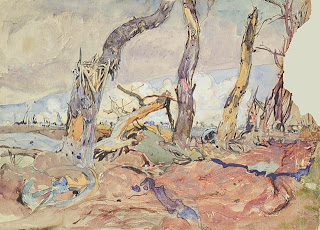Social 20-1
We started our film study of 'Gandhi" today. We will continue this film tomorrow in class.Social 30-1
Today was a work/study period. I gave you the Chapter 8 Worksheet, but I think that most of you opted to study for your Cold War Test which is tomorrow, please see the study guide here. Your Unit 2 Final Exam is on November 22nd, please see the study guide below.Unit 2 Final Exam Study Guide:
It will be a 75 multiple choice question test. In your textbook, this is material from Chapters 3-8. Please look at the studying hints below:- study "The Development of Classical Liberalism" (ppt)
- study "Responding to Classical Liberalism" (ppt)
- study "The Evolution of Modern Liberalism" (ppt)
- study "The Techniques of Dictatorship" (ppt)
- study "20th Century Rejections of Modern Liberalism" (ppt)
- study "The Origins of the Cold War" (ppt)
- study the key concepts from the Chapters 3-8 worksheets
- please see the summary notes from the Ideologies textbook: Chapter 7 (Private Enterprise)
- supply-side economics
- boom and bust cycle/business cycle
- laws of supply and demand, Adam Smith, invisible hand, market forces
self-interest, consumer sovereignty, competition, private ownership, profit motive - basic economic problems/questions
- advantages/disadvantages of the market economy
- causes of the Great Depression
- FDR and the New Deal
- please see summary notes from the Ideologies textbook on the Mixed Economy Case Studies #14 (Sweden) and #15 (Canada), #16 (Japan), #17 (Fascism and Nazism)
- also see the Democratic Socialism booklet on Sweden (indicative planning, "cradle to the grave" economics)
- characteristics of a mixed economy
- nationalization
- privatization
- democratic socialism
- welfare capitalism
- Keynesian economics
- the business cycle and fiscal and monetary policies (study all of the notes I gave you and the booklet that I gave you)
- demand-side economics
- neo-conservatives
- monetarism
- trickle down economics
- supply-side economics
- Thatcherism and Reaganomics
- Milton Friedman
- Friedrich Hayek
- how Keynesian economics deals with a recession (remember "the percolator": increase circulation of money reducing taxes, increase government spending on "make work" projects, and reduce interest rates, which according to Keynesian economics is going increase demand for goods and services and lead to more money circulating in the economy)
- how supply-side economics deals with a recession (remember "trickle down coffee maker": government should stimulate the goods and services sector of the economy by reducing corporate and personal taxes, eventually benefits will "trickle down" to the middle class and working class, make connections between supply-side economics and laissez faire economics/classical liberalism)
- advantages and disadvantages of a mixed economy
- neo-conservative criticism of government intervention
- characteristics of a centrally planned economy
- advantages and disadvantages of a centrally planned economy
- Marx notes (sent by e-mail)
- Lenin notes (sent by e-mail)
- establishment of the Soviet Union
- Soviet economic system (top-down decision-making process)
- Lenin's War Communism and the New Economic Policy
- "Stalin and the Modernization of Russia" (see film notes)
- Stalin notes (sent by e-mail)
- "Changes to Soviet Society After Stalin" notes (this bridges the gap between Stalin and Gorbachev)
- Gorbachev to Collapse Notes
- Economic Planning in the USSR booklet
- techniques of dictatorships (USSR and Nazi Germany case studies)
- modern liberalism
- features of the Nazi state
- Hitler's rise to power
- Characteristics of Democracy
- Characteristics of Dictatorship
- Democratic Systems notes
- Non-Democratic Systems notes
- Types of Dictatorships notes (includes Techniques of Dictatorships as well)
- A Comparison of Communism and Fascism notes
- Totalitarianism notes
- Fascism/Nazism booklet (has techniques of dictatorship in Nazi Germany and USSR)
- do a brief review of the political spectrum and economic spectrum and the quadrant model
IB 30
You wrote a cartoon analysis today for the first 20 minutes, and then I proceeded with the PowerPoint presentation on Canada and Latin America's role in WWI. I have posted this presentation on the wiki because you will need it for your matching quiz tomorrow. There are 39 key concepts in this matching quiz. We'll finish off discussing Latin America's role in WWI tomorrow.I've mentioned this a few times in class, but I guess it's better late than never! Here is a link to a website that discusses J.R.R. Tolkien's experiences in the Great War, and how that influenced his writing of the Lord of the Rings trilogy, specifically the Journey through the Dead Marshes. The Great War was also a time when some of our most famous landscape artists came to the forefront, I'm referring to the Group of Seven, of course. Can you see some similarities in the pictures that I'm posting below?



I guess my point is that art is based on personal experience, and these artists were heavily influenced by their experiences in the Great War.
No comments:
Post a Comment